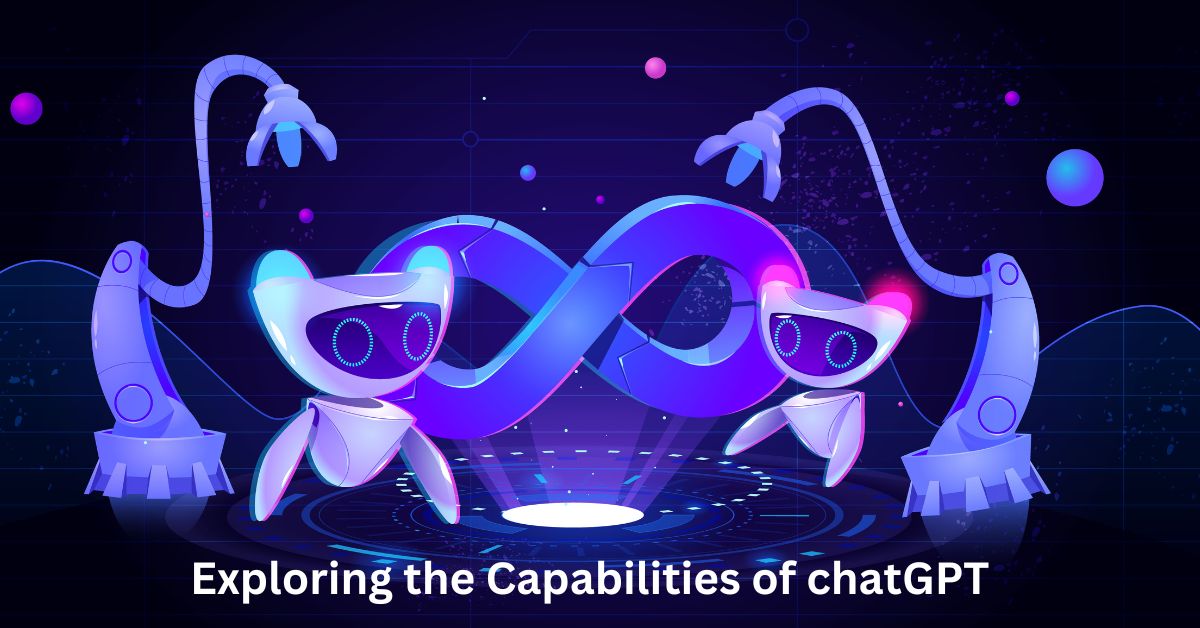|
Listen Now Our Blog Podcast
Getting your Trinity Audio player ready...
|
Introduction
In this article, we’ll be exploring the capabilities of the chatGPT AI tool, a variant of the GPT-3 language model specifically designed for conversational settings.
We’ll delve into chatGPT’s ability to build chatbots, translate between multiple languages, and perform other natural language processing tasks. By the end of this article, you’ll have a good understanding of what chatGPT is and how it can be used in a variety of industries. So, let’s get started!
One of the primary capabilities of chatGPT is its ability to build chatbots for use in customer service, e-commerce, and other applications. ChatGPT is unique in that it is able to generate human-like responses and handle complex conversations, making it a powerful tool for building chatbots that can effectively communicate with customers and users.
Using chatGPT to build a chatbot involves providing the model with a large dataset of conversations and training it to generate appropriate responses based on the input it receives. This allows chatGPT to learn the nuances of language and understand the context in which conversations are taking place, enabling it to provide more accurate and natural-sounding responses.
There are numerous benefits to using chatGPT for chatbot development. For businesses, chatbots built with chatGPT can provide a more efficient and cost-effective way to handle customer inquiries and complaints, freeing up human customer service representatives to focus on more complex issues. For users, chatbots built with chatGPT can provide a more seamless and convenient way to get the information they need or make a purchase, improving the overall customer experience.
Overall, chatGPT’s ability to build chatbots that can effectively communicate with humans makes it a valuable tool for businesses looking to improve their customer service and streamline their operations.
Chatbot functionality
One of the primary capabilities of chatGPT is its ability to build chatbots for use in customer service, e-commerce, and other applications. ChatGPT is unique in that it is able to generate human-like responses and handle complex conversations, making it a powerful tool for building chatbots that can effectively communicate with customers and users.
Using chatGPT to build a chatbot involves providing the model with a large dataset of conversations and training it to generate appropriate responses based on the input it receives. This allows chatGPT to learn the nuances of language and understand the context in which conversations are taking place, enabling it to provide more accurate and natural-sounding responses.
There are numerous benefits to using chatGPT for chatbot development. For businesses, chatbots built with chatGPT can provide a more efficient and cost-effective way to handle customer inquiries and complaints, freeing up human customer service representatives to focus on more complex issues. For users, chatbots built with chatGPT can provide a more seamless and convenient way to get the information they need or make a purchase, improving the overall customer experience.
Overall, chatGPT’s ability to build chatbots that can effectively communicate with humans makes it a valuable tool for businesses looking to improve their customer service and streamline their operations.
One of the key capabilities of chatGPT is its ability to translate between multiple languages in real-time. This feature makes chatGPT a valuable tool for facilitating communication in a global business setting or improving the user experience on multilingual websites.
To use chatGPT’s translation feature, users simply input the text they want to translate and specify the target language. ChatGPT then generates a translation of the text in the desired language, taking into account the nuances and context of the original text.
One of the benefits of using chatGPT for translation is its ability to handle complex sentences and conversations, making it well-suited for tasks such as customer service or e-commerce where clear communication is critical. Additionally, chatGPT’s real-time translation capability means that users don’t have to wait for a translation to be generated, making it a convenient and efficient tool for translation tasks.
Overall, chatGPT’s language translation capability makes it a valuable tool for businesses and organizations looking to improve communication and facilitate interactions with multilingual audiences.
Other capabilities
In addition to its chatbot functionality, chatGPT has several other capabilities that make it a powerful tool for natural language processing tasks.
One of these capabilities is language generation, which allows chatGPT to generate text based on a given prompt or set of parameters. This can be useful for tasks such as content creation, where chatGPT can be trained to generate articles or other written materials based on specific topics or styles.
Another capability of chatGPT is summarization, which allows the model to condense a large amount of text into a shorter, more concise summary. This can be useful in a variety of settings, such as news organizations where it can be used to generate summaries of articles for quick consumption, or in business settings where it can be used to summarize reports or presentations.
Finally, chatGPT also has the ability to perform language translation, as discussed in a previous section of this article. This can be useful for facilitating communication in a global business setting or improving the user experience on multilingual websites.
Overall, chatGPT’s language generation, summarization, and translation capabilities make it a versatile tool for a wide range of natural language processing tasks.





Thanks for sharing. I read many of your blog posts, cool, your blog is very good.